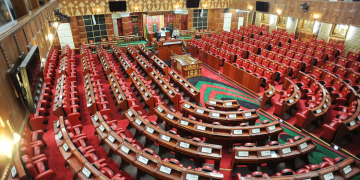The Higher Education Financing (HEF) board has shared a guide on the dos and don’ts for undergraduate and TVET students applying for government scholarships and loans.
The guide also applies to students submitting their applications via the official platform: www.hef.co.ke.
For starters, applicants are advised to provide correct personal and academic information when filling out the application forms.
This includes using a valid phone number and a functional email address with a memorable password. Before starting the process, applicants must ensure the email is accessible.
Students must also correctly enter their KCSE Index Number and examination year and carefully read the Terms and Conditions of the scholarship and loan application process.
HEF also highlights the importance of uploading required attachments in the correct format and file size, as indicated on the portal.
Applicants should provide accurate University or College details and inform the funding agencies if they transfer to another institution or change their course.
HEF further urges students to update their contact details, including phone number and email, and submit their applications on time to avoid missing out on funding.
What to Avoid When Applying
HEF warns students against using another person’s M-PESA or bank account for upkeep payments or using someone else’s national ID number.
Sharing student portal passwords, bank PINs, or MPESA credentials is highly discouraged for security reasons.
Applicants should also be alert to scams, as scholarship and loan applications are free, and no one should request payment for assistance.
Additionally, physical submission of application forms is not accepted. All applications must be submitted online through the official website only.
Also Read: Govt Explains Criteria for Student Loans Bands & Respective Fees for Households After Ruto Order
The HEF guidelines aim to promote efficiency, prevent fraud, and ensure that every deserving student accesses higher education funding without challenges.
Student band categorization in the new funding model
The government uses the means the testing instrument (MTI) to scientifically determine the needs of students and fund them based on four criteria: choice of the program, household income band, affirmative action performance, and government priority areas.
For students placed in band one, the government scholarship will cover 70%, while the loan will cover 25%, making it a total support 95%. The family will contribute 5%, and the upkeep loan will be Ksh60,000.
The government scholarship, on the other hand, will cover 60% for band two students, with learners in this band set to receive loans cover for 30% of the fees, making the total support from the government 90%.
The students will receive upkeep loans of Ksh55,000, with their families set to contribute 10% of the fees.
Also Read: HEF: Role Chiefs Will Play in Process of Recategorization of University Students
For students placed in band three, the government scholarship will cover 50%, while the loan will cover 30%, making it a total support 80%. The family will contribute 20%, and the upkeep loan will be Ksh50,000.
The government scholarship will cover 40% for band four students, with learners in this band set to receive loans cover for 30% making the total government support 70%.
Follow our WhatsApp Channel and X Account for real-time news updates.
















































































Hello mbona hiyo pesa haipo Kwa accounts yetu